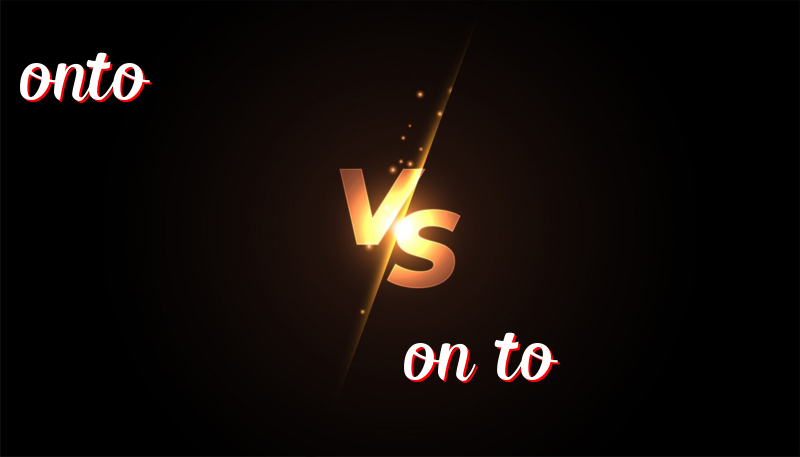Differentiating Between “Onto” and “On to”: A Simple Guide
Understanding “Onto” vs “On to”
Learning English can be tricky, especially when words sound alike but have different meanings. Today, we will talk about “onto” and “on to.” They may sound the same, but they are used differently.
History of the Words
The word “onto” came from the words “on” and “to” joining together. It means moving to a position on a surface. The phrase “on to” is simply two separate words that come together in a sentence. They are used when “on” is part of a phrase followed by “to” as a preposition.
How to Use “Onto”
“Onto” means moving to a surface or a position. Use “onto” when something is going up or being placed on something else.
- The cat jumped onto the table.
- She climbed onto the roof to see the stars.
- The boy threw his toy onto the bed.
- Pour the sauce onto the pasta.
- He got onto the bus in a hurry.
How to Use “On to”
“On to” is used when “on” is part of a phrase and “to” is a preposition, showing direction or movement. It’s often used with verbs like “move,” “go,” or “pass.”
- After the meeting, we moved on to the next agenda item.
- The teacher moved on to the next page of the book.
- She decided to go on to college after high school.
- He passed on to his friend the important message.
- The story went on to describe the hero’s adventures.
Trick to Remember the Difference
Think of “onto” as “on top of.” If something is moving to be on a surface, use “onto.” For “on to,” if you can split it into “on” and “to” without changing the meaning, use “on to.”
Summary
Remember: Use “onto” when talking about moving to a surface. Use “on to” when you have a phrase with “on” followed by “to.” Practice and these words will become easy for you!

Leave a Reply
You must be logged in to post a comment.